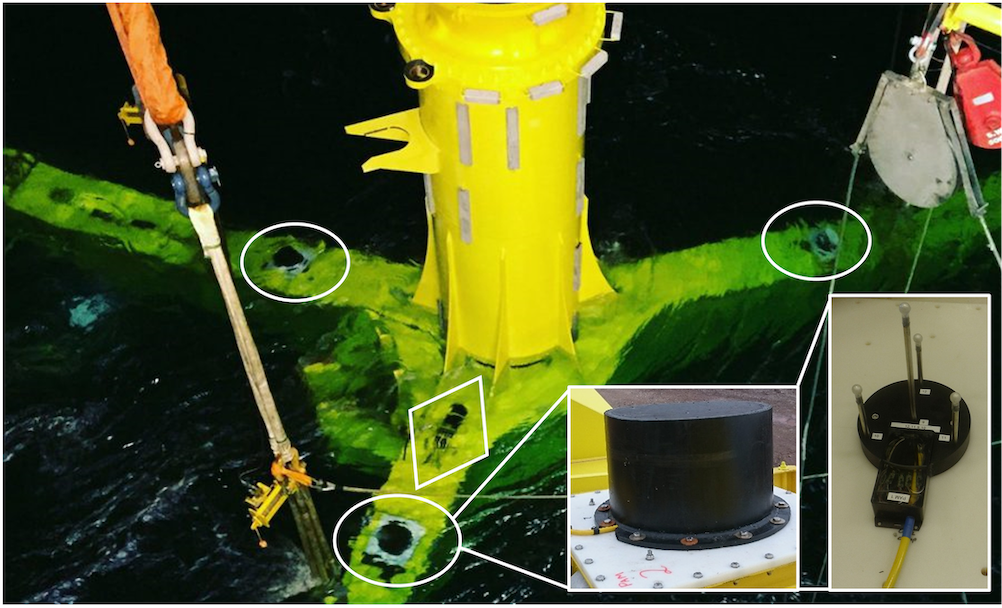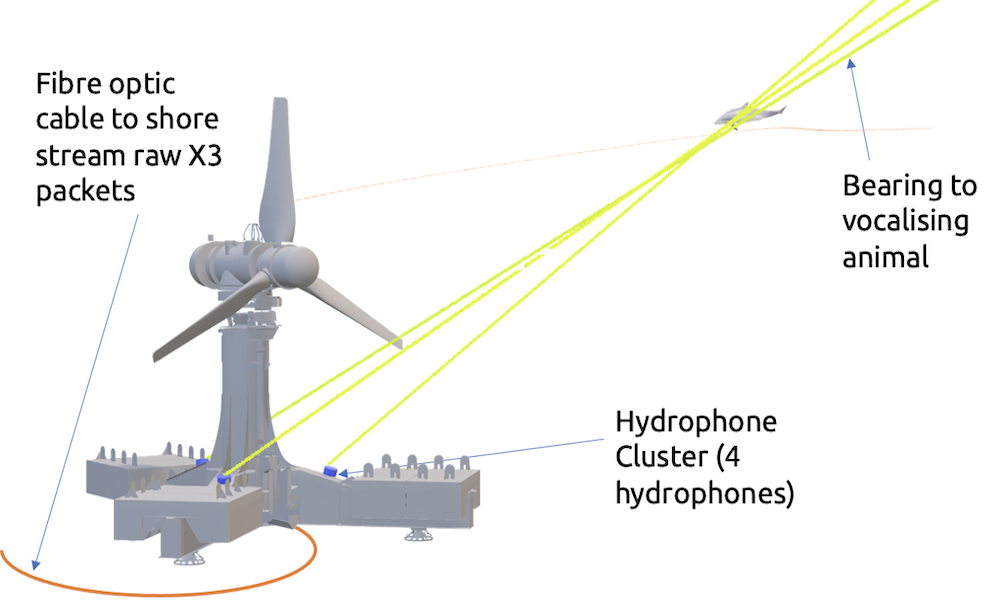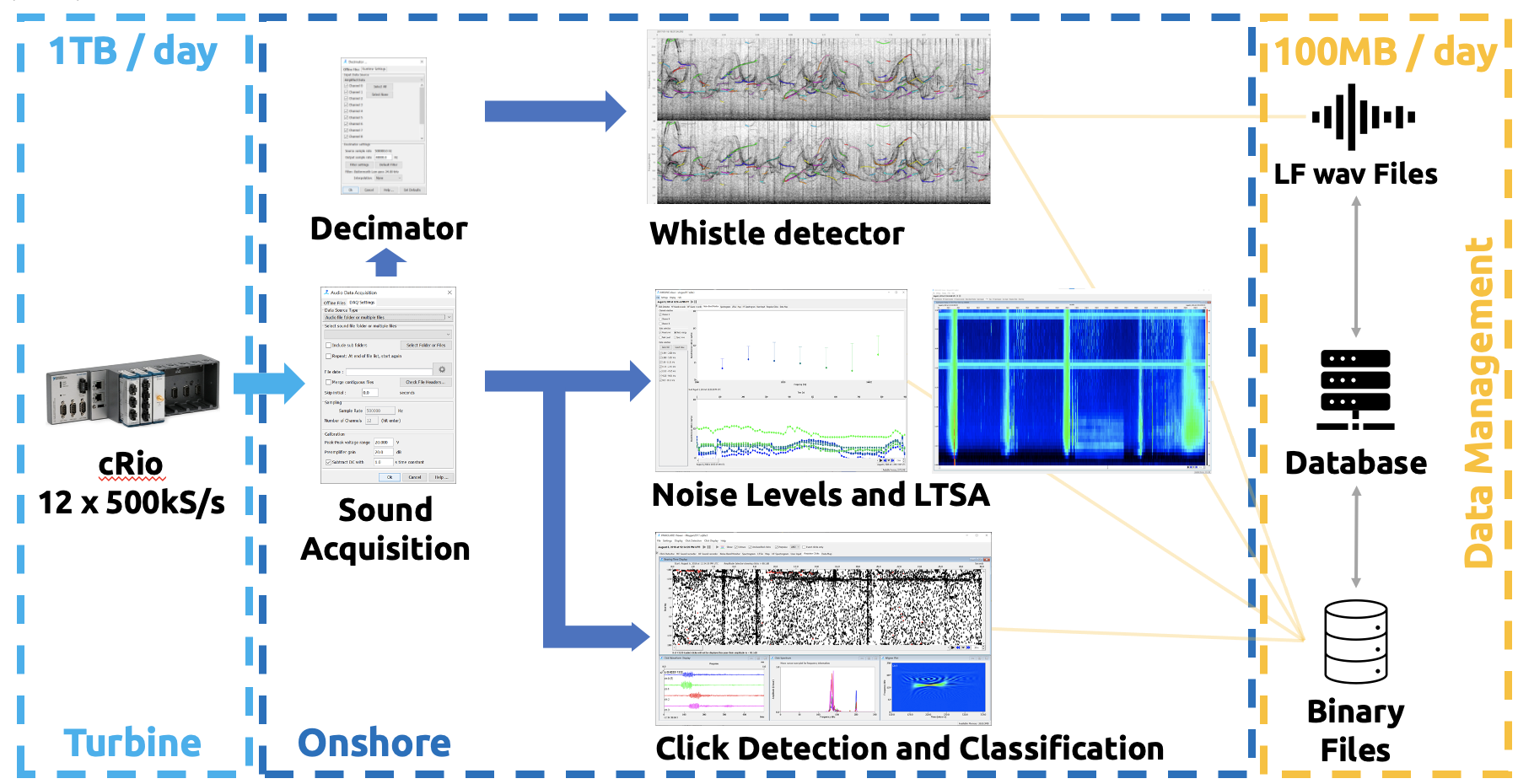PAMGuard and Tidal Turbines
Introduction
In 2017, an experimental array of four tidal turbines was deployed in northern Scotland by MeyGen. Tidal turbines have the potential to provide clean and predictable renewable energy, and could form an important part of our baseline energy requirements in the future. However, they were a relatively new technology, and very little was known about their potential effects on the environment.
There is concern that marine mammals might be injured by the turbine blades (Wilson et al, 2007) and so an experiment was devised to track the 3D underwater movements of dolphins and porpoises around one of the turbines. A 12-channel hydrophone array was mounted on the turbine foundation to allow us to acoustically localize and track vocalizing animals. This involved installing a compact cRIO computer from National Instruments directly on the turbine, which digitized the acoustic data from the hydrophones, compressed it, and then transmitted the data to shore via fiber optic cable.


PAMGuard
PAMGuard, running on a standard consumer desktop PC back on shore, processed the 12 channels of data in real-time, detecting potential echolocation clicks, running soundscape metrics such as octave noise bands and a long-term spectral average, detecting potential tonal sounds, and decimating the raw sound data, saving 48 kHz files. This meant that, although we did not save the raw high-frequency files, we had sound files for the most complex part of the soundscape (the lower frequencies) and detected high frequency transient sounds at a high false-positive rate, along with soundscape metrics for the higher frequencies. In this way, we were able to retain the interesting parts of the data but reduce our dataset to about one-tenth of what it would have been if we had saved the raw data.

Results
PAMGuard monitored continuously for almost two years, collecting a huge dataset that was then used to track the location of porpoises in close proximity to and within the wider surrounding area of the array. Ultimately, the experiment was able to demonstrate that:
It was practically feasible to deploy localizing arrays on tidal turbines (Gillespie et al., 2020).
Porpoise presence was reduced by the operation of the turbine (Palmer et al., 2021).
Porpoises avoided the immediate vicinity of the turbine rotor, so the risk of collision is low (Gillespie et al, 2021).
Conclusion
PAMGuard’s real-time and post-processing capabilities were used to streamline data collection in a complex and data-intensive project, allowing us to develop a practical acoustic workflow and ultimately answer important conservation questions.
References
Gillespie, D. et al. (2020) ‘Passive acoustic methods for tracking the 3D movements of small cetaceans around marine structures’, PLOS ONE. Edited by W.D. Halliday, 15(5), p. e0229058. Available at: https://doi.org/10.1371/journal.pone.0229058.
Gillespie, D. et al. (2021) ‘Harbour porpoises exhibit localized evasion of a tidal turbine’, Aquatic Conservation: Marine and Freshwater Ecosystems, 31(9), pp. 2459–2468. Available at: https://doi.org/10.1002/aqc.3660.
Palmer, L. et al. (2021) ‘Harbour porpoise ( Phocoena phocoena ) presence is reduced during tidal turbine operation’, Aquatic Conservation: Marine and Freshwater Ecosystems, 31(12), pp. 3543–3553. Available at: https://doi.org/10.1002/aqc.3737.
Wilson, B. et al. (2007) Collision risks between marine renewable energy devices and mammals, fish and diving birds, Report to the Scottish Executive. Scottish Association for Marine Science.